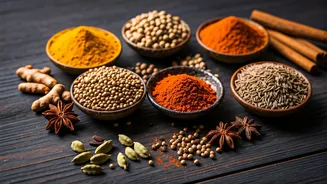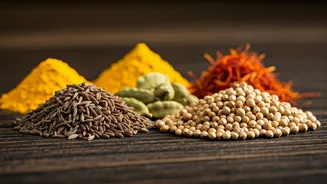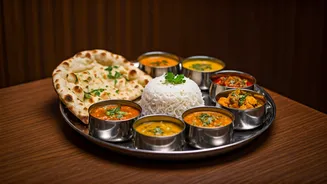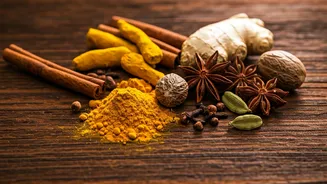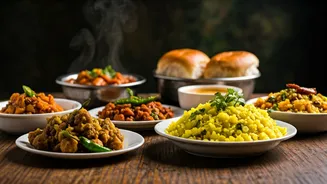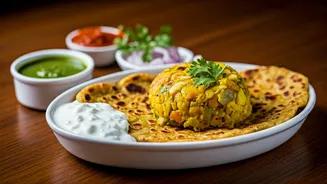The Spice Foundation
The cornerstone of Indian cooking is undeniably the spice blend. These combinations, often passed down through generations, are more than just seasonings;
they are a legacy of culinary tradition. Spices, when used correctly, don't just add taste, they transform the entire dining experience. Think about the common 'garam masala', a blend that differs from home to home and family to family, yet usually includes cinnamon, cardamom, cloves, nutmeg and peppercorns. This blend offers warmth, complexity, and a depth of flavor that is essential for a variety of dishes. Many other blends like chaat masala (tangy and savory), sambar powder (used in South Indian cooking) and goda masala (used in Maharashtrian cuisine) add diverse dimensions to the culinary tapestry of India. The selection and the precise proportions of the spices determine the final taste profile and reflects the regional preferences and the cook’s unique approach to the craft. Learning the art of spice blending is like learning the language of Indian cuisine; the words (spices) might be simple, but the conversation (dish) can be very complex and expressive.
Chilies: Fire and Flavor
Chilies are the soul of Indian cuisine, a family of peppers that provides a spectrum of heat and flavor. Indian cooking utilizes various types, from the mild Kashmiri chilies, known for their vibrant red color and subtle heat, to the fiery bird's eye chilies (locally known as 'dhania mirch' or 'teekhi mirch'), capable of delivering a powerful punch. The heat of a chili comes from capsaicin, which varies greatly depending on the type of chili and how it's used. When cooking, the addition of chilies comes at several stages, adding heat and complexity. Some are added during the tempering process, frying the dried chilies in oil to infuse a rich flavor, while others are incorporated directly into the dish as a paste or powder. Chilies also vary in other traits. Kashmiri chilies provide a deep red hue and mild taste while other chilies like Guntur Sannam bring intense heat and flavour. The type of chili chosen often depends on the regional preference and the cook's desired level of spiciness. Handling chilies can also be tricky; be careful to wear gloves while cutting them, and remember that capsaicin oil can linger on your hands and cause burning sensations. Use them wisely, and chilies will elevate your dishes to a whole new level.
Turmeric: The Golden Spice
Turmeric, the 'golden spice', is a cornerstone of Indian cooking, prized not only for its vibrant color but also for its remarkable health benefits. Curcumin, the active compound in turmeric, is known for its anti-inflammatory and antioxidant properties, making it a valuable addition to any diet. Turmeric is used in almost every Indian kitchen, often as an essential ingredient in curries, stews, and lentil dishes. The use of turmeric extends beyond its culinary applications; it is also a staple ingredient in Ayurvedic medicine, which uses it for its healing effects. The flavor of turmeric is earthy, slightly bitter, and adds depth and complexity to dishes. The versatility of turmeric is also noteworthy, blending seamlessly with other spices, enhancing their flavors. For instance, in a classic chicken curry, turmeric works harmoniously with coriander, cumin, and ginger, creating a balanced and flavorful profile. It's a spice that adds color, flavor, and health benefits all in one go, truly making it a central spice in the world of Indian food.
Cumin and Coriander
Cumin and coriander seeds are indispensable elements in Indian cooking, offering distinct yet complementary flavors. Cumin seeds, with their warm, earthy, and slightly bitter notes, are often the first spice to be used when preparing a dish, providing an excellent base. They are commonly toasted to enhance their aromatic profile, then used whole or ground in various dishes, from vegetable curries to rice pilafs. Coriander, which can be used as seeds or fresh leaves (cilantro), offers a brighter, fresher taste. Coriander seeds bring a citrusy and lightly spicy flavour, adding depth to spice blends. Fresh coriander, as garnish, gives a burst of freshness. A blend of cumin and coriander often works wonders, as they both have complementary qualities. Cumin can be used to deepen the flavor base, while coriander provides a refreshing finish. When blended, they create a versatile base that can enhance various dishes. These two spices have a key role in the balanced flavors of Indian cuisine and are used in almost every dish.
Cardamom: Aromatic Elegance
Cardamom, an aromatic spice with a complex flavor profile, adds a touch of sophistication to Indian cuisine. The seeds come from pods that contain a mix of sweet, citrusy, and slightly peppery notes. The flavor is a key component to many Indian sweets and desserts, but it also adds richness to savory dishes. Green cardamom is the most common variety used, while black cardamom offers a smoky flavor. Both types are often used whole, ground, or infused in dishes. For example, in a traditional masala chai, cardamom pods are a key ingredient, giving the tea its distinctive aroma and taste. It also complements other spices, and can be used in biryanis and curries. Cardamom adds an exotic touch to any dish, helping to enhance other flavours by balancing them with its distinct aroma. The use of cardamom demonstrates the subtle balance that defines Indian cooking, where each spice plays its essential part, elevating the entire experience.
Other Essential Spices
Beyond the core spices, many others contribute to the complexity of Indian cuisine. Asafetida, often called 'hing', has a pungent smell, which fades upon cooking, providing a savory depth, commonly used in lentil dishes. Mustard seeds, another important spice, are often tempered in hot oil, where they pop and release their nutty flavor, enhancing the taste of dishes like dals. Fenugreek seeds, with their slightly bitter taste, add a maple-like sweetness when cooked and are essential in many curries. Ginger and garlic are also used, adding fresh, aromatic depth to dishes. Ginger brings a spicy and refreshing flavor, and garlic is a staple for a savory base. These ingredients together combine to create a symphony of flavors. Depending on the region, these spices may be mixed in varied quantities, resulting in various unique flavors of food.
Spice Blending Techniques
Spice blending is an art that enhances the essence of Indian cooking. Achieving the right balance and intensity requires understanding how spices complement each other and react to heat. One common method is to 'temper' spices, meaning frying whole spices in hot oil to release their aroma, resulting in a rich, flavourful base for the dish. Grinding spices at home, ideally just before use, helps to maintain their freshness and flavor. Using a mortar and pestle or spice grinder allows you to control the coarseness of the blend, which impacts the final texture of the dish. Start by toasting whole spices to develop their flavor before grinding, and blending complementary spices. Learning about the characteristics of each spice is crucial, which also helps you to experiment and come up with your own blends. The secret of Indian cooking often lies in the art of the perfect blend, providing the taste profile of a dish. Each cook's unique touch ensures the flavor becomes a celebration, a reflection of creativity and tradition.
